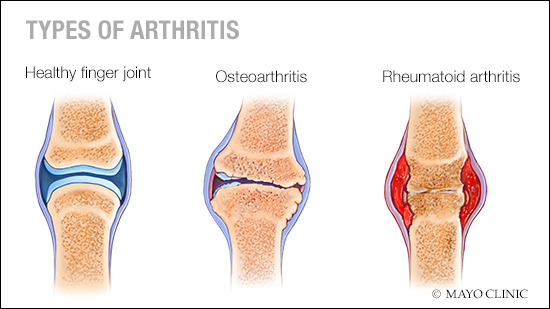What is it?
Arthritis is inflammation in any joint caused by growing or deteriorating bone into the joint space. There are two common types of arthritis – osteoarthritis or rheumatoid arthritis – but both cause pain, stiffness, and weakness of joints.
How do you get arthritis?
There are two types of arthritis and both have a very different cause.
1 – Osteoarthritis – This is a common ailment of people older than 40 who have had a joint injury in the past which fails to heal sufficiently. Over time the uneven loading of the joint causes it to remodel.
2 – Rheumatoid arthritis – This is an autoimmune disease that can affect multiple joints at the same time or various times. It can affect people of all ages. During periods of inflammation physiotherapy, massage therapy and hydrotherapy can be very effective but will not cure the condition long term.
NOTE – A common myth is if you click your joints a lot you will get arthritis. This is not necessarily the case. If you can click your joint once only then you are simply letting gas out of the joint. If you can click your joint multiple times in succession then there is a chance you could be aggravating a joint.
What does it feel like?
You may describe arthritis as locking, clicking, blocking, graunching, glass, hot or aching. Stiffness is almost always present and weakness at the joint as the surrounding muscles struggle to move the painfully stiff joint. In weight-bearing joints eg hips, knees, ankles and toes, you will be reluctant to stand and walk for long periods.
How is it diagnosed?
Your physiotherapist can diagnose arthritis with the mechanism and progression of your pain, the amount of time and nature of your swelling, and by performing some simple tests. If we suspect arthritis we will discuss treatment options either conservative treatment or surgical review. You may be referred to a specialist and/or radiologist for an x-ray to determine the extent of the arthritis.
How can Back In Action help?
One of the most common symptoms of arthritis is the loss of full movement and strength in your affected joint. We initially work to regain your movement back with hands-on techniques. These can include mobilisations, massage, and taping. We can help to maintain and build strength in the area. We will discuss options with you including conservative rehabilitation and/ or surgery. Strengthening your joint before surgery is extremely important to ensure the best post-operative outcome.
Is there anything else that can help?
Current studies are showing tumeric as a potential natural anti-inflammatory. To find out more click here.

